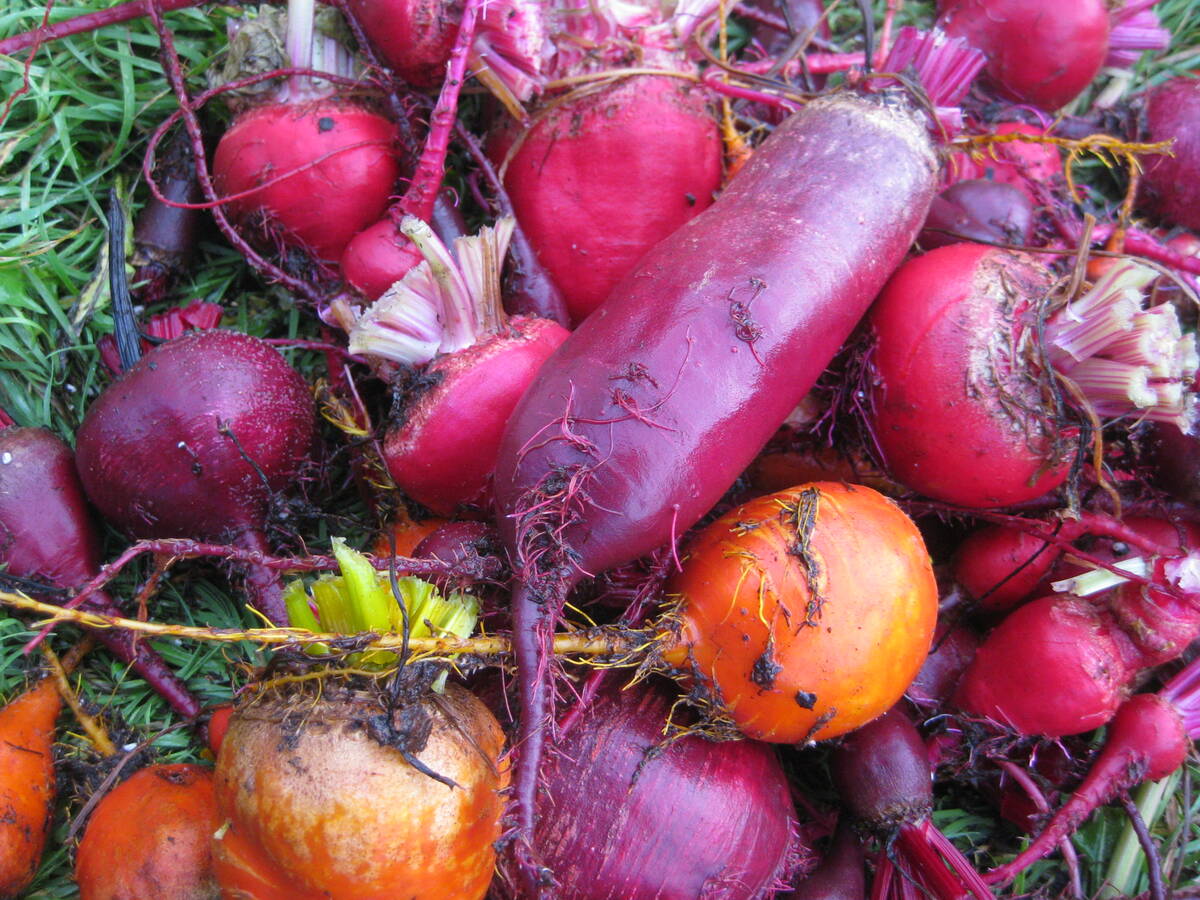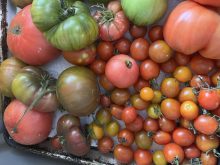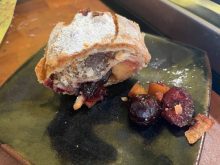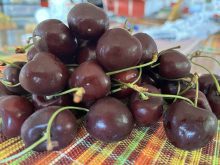I am standing in a laneway lined by a double row of blue spruces, a shelled bit of peanut on my ungloved palm. It’s only a few seconds before a black-capped chickadee settles on one of my outstretched fingers, its tiny wire claws gripping my skin tightly. It’s an alien feeling, and I work hard to restrain my fear of birds as anxiety flutters up from my gut.
“Just a tiny chickadee,” I tell myself, “a bird that sings my own name repeatedly every day, how dangerous can that be?”
Read Also

Putting down roots, part 1: Beets
Densely textured, richly coloured and earthy even in their seed form, beets are reminiscent of dirt for Saskatchewan writer dee Hobsbawn-Smith.
The chickadee finishes the peanut and flies off, replaced quickly by a nuthatch, then another – or maybe the same – chickadee, impossible to tell one from the other in their black bonnets.
Feeding the birds is a ritual for writers attending the annual Saskatchewan Writers’ Guild winter writing retreat at St. Peter’s Abbey. I have been going to St. Peter’s off and on for 15 years to attend the winter writing retreat; I never go to the summer retreat because, like the monks, I have a garden to tend.
Part of the Benedictine Order, this particular abbey was established in 1903 by German immigrants at Muenster, Sask., about 10 km east of Humboldt. The order has commitments to work, prayer, obedience without grumbling, humility and hospitality. For decades at St. Peter’s, a lot of that work went into minding a large garden that helped the monks maintain a high level of culinary self-sufficiency. The walls along both sides of the long corridor in the guest wing are lined with photographs of the fathers and brothers digging potatoes, harvesting carrots, picking berries and tending the bees in the apiary. A big potful of honey always occupies a spot of honour on a counter near the kitchen, and as a lover of honey in my coffee and tea, that makes me very happy.
The abbey has a corps of cooks, and eating is communal. Writers gather at the refectory’s long tables for whichever of the three daily meals we need; some of us skip breakfast, others work straight through lunch, but all of us invariably gather for an informal cocktail hour before or after dinner to gossip, work on jigsaw puzzles, play Trivial Pursuit — and talk about writing.
At St. Peter’s, I take advantage of the abbey’s gym to reduce the impact of so many hours spent writing at my desk in my small room, but when confronted with the cooks’ stellar double chocolate cookies, most of us don’t resist. I accept gaining a pound or two as a small price for that pleasure.
A third coping mechanism at this recent retreat was eating salad frequently. I always bring along a litre jar of homemade salad dressing, which I prefer to the commercial choices set out by the cooks. This year, almost all of the writers in attendance made use of that bottle of dressing. I had to replenish it twice — the only cooking I did in two weeks!
Homemade dressing is a small way to practice self-care and mindful eating while upping the yum quotient of any salad. I admit to being a bit of a fanatic: my first cookbook, Skinny Feasts, published in 1997, included 17 versions of salad dressings, with dozens of variants. One of my favourites is the simplest: a citrus and honey mustard dressing that is just as good on fruit and grilled salmon or poached sablefish as it is on greens. It’s proof positive that little things make a positive difference in a confusing world that sometimes feels good to retreat from. First we eat, then we trade stories on other small changes.

Honey lemon vinaigrette
Simple but delicious, this all-purpose recipe multiplies and keeps well, so make larger batches to share or store in the fridge. Remove it from the fridge 30 minutes before use. Shake or stir it well before using on robust grilled vegetables, tender new greens, grilled fish, or fruit. Substitute maple syrup for the honey to vary it. Makes about 1 ¼ cups.
- 2 Tbsp. smooth or grainy Dijon mustard
- 1 tsp. minced fresh thyme, tarragon, parsley or chives, optional
- 2 Tbsp. melted honey
- 2 lemons, juice and zest
- ¼ c. fruit-infused/apple cider/sherry/mead vinegar
- 1 orange, juice and zest
- Kosher salt and freshly cracked pepper to taste
- ½ – 2/3 c. extra virgin olive oil, more as needed

Whisk together the mustard, herbs, lemon juice and zest, honey, vinegar, orange juice and zest, salt and pepper. Slowly add the oil, whisking to emulsify. Taste and adjust the balance, adding more vinegar if the dressing is too oily, more oil if it’s too sharp.















